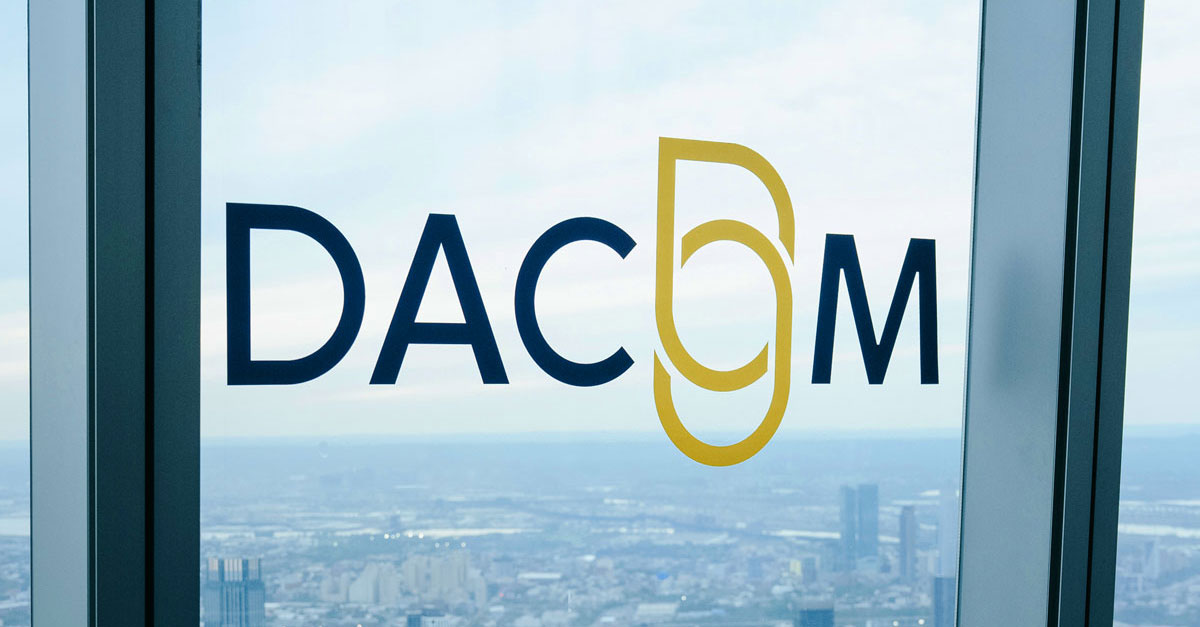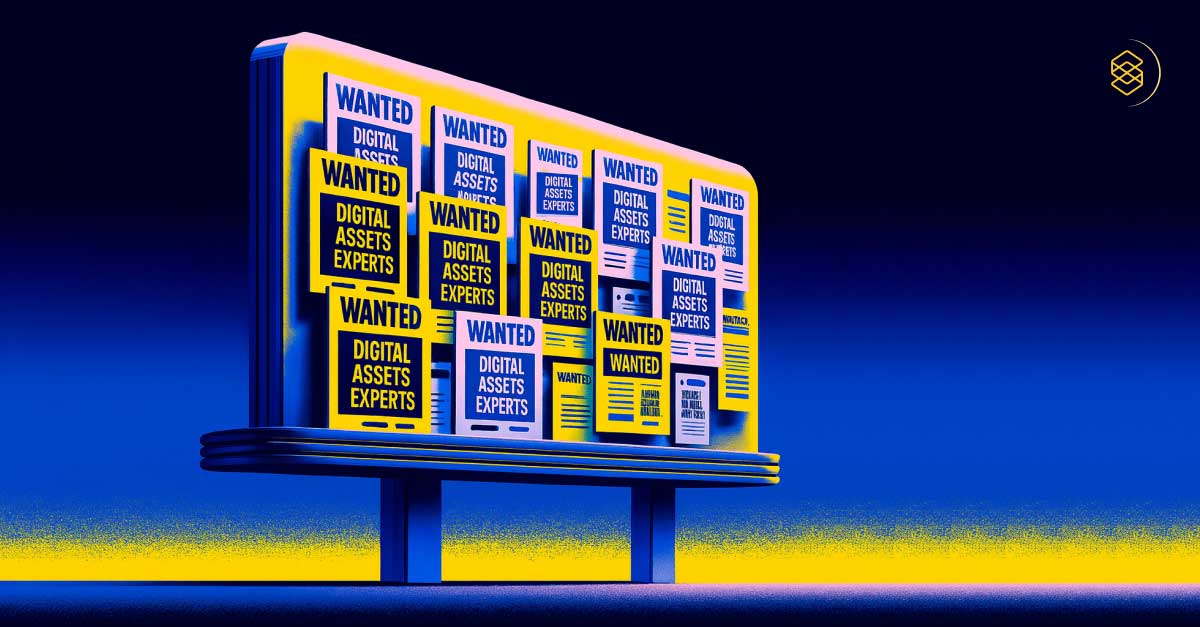From the 64th floor of One World Trade Center, Solidus Labs’ DACOM NYC 2025 unfolded against a sweeping skyline, but the real spectacle was the policy fault lines and blueprints taking shape in real time.
The 13th edition of DACOM, Solidus Labs’ flagship summit, arrived as the U.S. again became the focal point of global financial transformation. The theme, “The Blueprint for Onchain Finance”, asked a simple question with complex implications: how do you scale onchain markets without sacrificing compliance or market integrity?
The program united policy, technology, and compliance leaders, reflecting what success requires in practice: alignment on regulatory clarity, market structure, and pragmatic guardrails.
Watch the full event:
New York's Role as Federal Regulation Takes Shape
Watch the full fireside chat ►

If you want to see where U.S. and global crypto rules are headed, watch New York. In what became her final public remarks before her resignation, Superintendent Adrienne Harris reflected on a decade of DFS acting as crypto’s regulator-in-chief.
“Clarity is the best compliance tool,” she said, arguing that rigorous, transparent standards in New York set firms up for credibility in Washington and abroad. Her points carried extra weight in hindsight: by week’s end, Harris formally left her post. Her emphasis on preserving state authority alongside federal tracks underscored how much of the national debate has already been shaped by New York’s early experiments.
Clarity is exactly what HALO delivers: a unified view of each entity’s risk posture, spanning trades, transactions, KYC, and activity across both on- and offchain markets.
Between Washington and Wall Street:
Bridging the Digital Asset Policy and Compliance Discussions
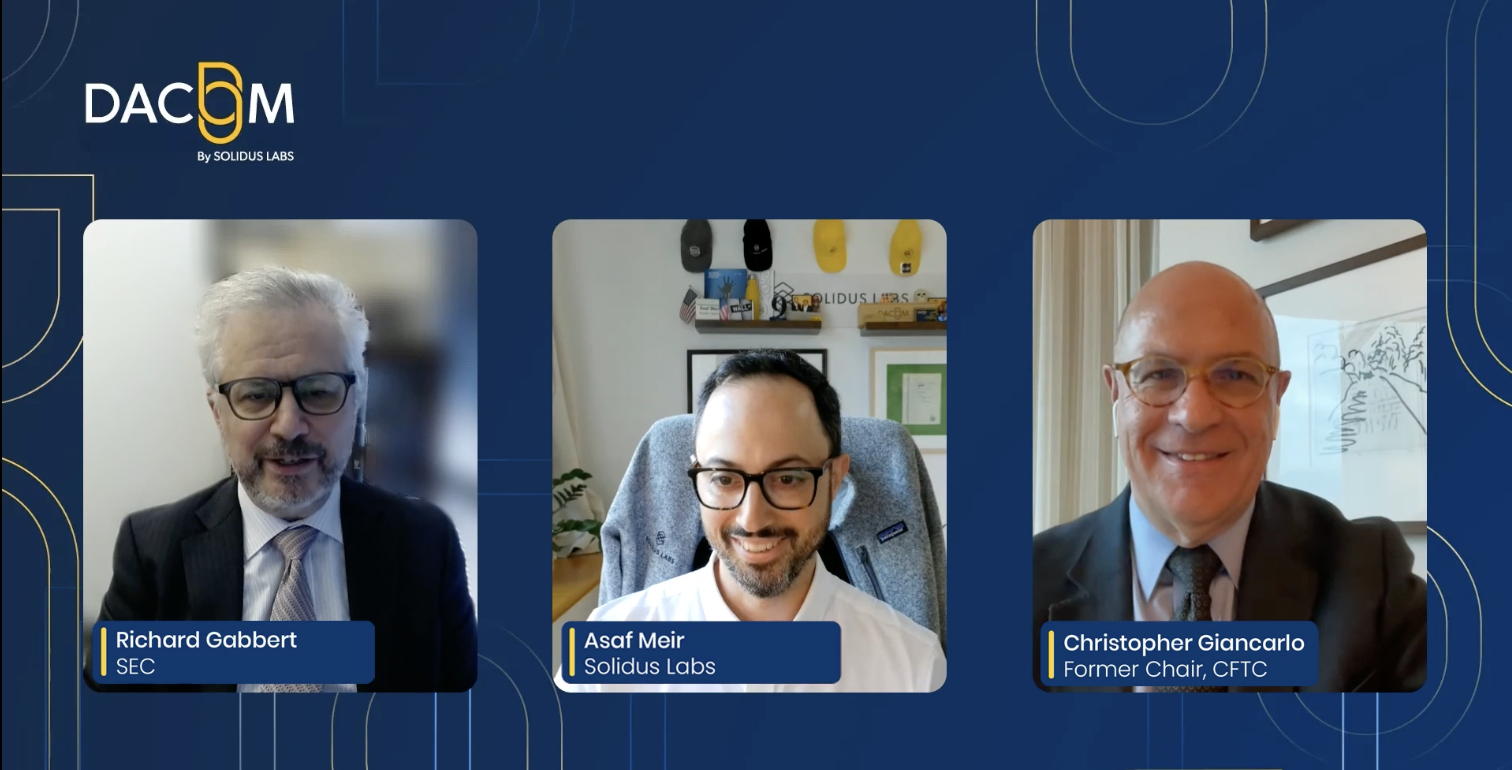
New York set the precedent; Washington is now writing the rules that will scale those precedents nationally. The day’s arc moved from state to federal, live from the trenches of policymaking. Christopher Giancarlo, the former CFTC chair and Richard Gabbert, Chief of Staff for the SEC’s Crypto Task Force, addressed the room while simultaneously participating in the SEC–CFTC joint roundtable in Washington. Hearing these points in real time, as the roundtable itself was underway, gave the DACOM audience an unusually unfiltered glimpse of how policy is being forged.
Giancarlo dismissed the idea of merging the two agencies, and instead called for “quantitative regulation”: using blockchain data and AI to run regulators’ own quantitative analyses, spot behavioral patterns, and identify misconduct, rather than waiting on whistleblowers or rumors. “Let people freely onto the freeway, and then we monitor patterns of behavior,” he said, likening it to highway policing: no identity checks at the on-ramp, but pattern-based enforcement when violations emerge.
That trajectory points to near-term expectations of real-time, pattern-based surveillance and AI-powered investigations. HALO aligns with that operating model: multi-dimensional pattern detection across products and venues, fusing on- and offchain signals, with auditable, human-in-the-loop AI-powered triage and investigations.
More about: HALO for Digital Asset Supervision
Gabbert, for his part, stressed that “Tokenized securities are still securities.” He cautioned that openness and new frameworks do not equal deregulation. He pointed to the SEC Crypto Task Force’s radical transparency, logging meetings and publishing submissions, and described its role as delivering clarity and targeted exemptive relief while legislation advances. Firms cannot wait passively for Congress but must structure their compliance programs to account for rules as they stand today.
Both speakers emphasized the need for a seamless, harmonized regulatory environment across SEC and CFTC jurisdictions.“There should be a far more seamless experience for investors and market participants moving between the two agencies’ jurisdictions.” The GENIUS Act, Giancarlo said, should be judged by one standard: “what’s good for the American investor and what’s good for the American economy.” He argued for marrying “the energy and innovation of the digital-asset world” with “the 50 to 100 years of experience” of major exchanges and traditional finance, institutions that know how to build durable markets and the compliance infrastructure to support them.
Under the Digital Buttonwood Tree

Policy only matters when it becomes operational standards. Two centuries after brokers huddled beneath the Buttonwood tree to forge the rules of modern markets, the New York Stock Exchange is re-examining that legacy through a digital lens. In a conversation at DACOM, NYSE’s Chief Product Officer Jon Herrick reflected on what has sustained the exchange across 232 years: trust, resiliency, transparency, and liquidity. Every innovation must preserve these standards to achieve institutional adoption. Those principles, he argued, are now being tested, and re-imagined, in the era of tokenization and DeFi.
“I can see DeFi and TradFi converging. At the end of the day, we’re all participants in the financial services industry.”
For Herrick, the true question is not when tokenized securities arrive, but how they’re governed. Issuance and corporate actions can no longer be confined to a single venue. In a world where securities are composable onchain, regulators, exchanges, and issuers face new complexities, price discovery across fragmented liquidity, corporate actions flowing through to holders, and the risk of “wrapping” assets in opaque protocols. The imperative, he argued, is to position tokenization not as a parallel system but as the next chapter of market infrastructure. As Herrick put it, “We shouldn’t think of tokenized and untokenized as separate, they’re both about delivering outcomes that improve capital formation and protect investors.”
HALO is already positioned at this convergence, fusing onchain and offchain signals into a unified risk profile—exposing sophisticated exploits that cut across both domains.
The Digital Asset Infrastructure Roadmap:
The Yellow-Brick Rails to Institutional Adoption

The next panel shifted focus to the building blocks of the new market, as custody, liquidity, and settlement are reshaped onchain. Moderated by TuongVy Le of Veda, it brought together three executives at the heart of institutional crypto infrastructure: Jeff Horowitz of BitGo, Jeffrey Malina of FalconX, and Dustin Palmer of Anchorage Digital Bank.
Institutions are no longer debating whether to enter digital assets, but how, and the answer depends on the strength of their compliance and infrastructure stack.
While crypto is often viewed as inherently riskier, blockchain’s transparency may enable superior oversight compared to traditional markets.
Horowitz cautioned that crypto’s crises have largely stemmed from poor guardrails: exchanges like FTX that co-mingled customer and firm assets, or custodians that lacked fiduciary duties. “Segregation and fiduciary responsibility aren’t optional, they’re existential,” he said.
In practice, that puts a premium on continuous proof of segregation, real-time, pattern-based monitoring across crypto and fiat rails that surfaces co-mingling risk early.
More about: HALO for Qualified Custodians
Malina emphasized the operational challenge of markets that never sleep. “The move to 24/7 programmable rails means firms need continuous monitoring and automated controls, eyes on the market at all hours.”
Palmer underscored the convergence of risks. “Fraud actors don’t respect silos,” he said. A cyber breach can morph into a financial crime within minutes as funds move through mixers, pools, and exchanges. For institutions, that means compliance must integrate market surveillance, AML, and cybersecurity under one roof.
More about: Why Trade Surveillance, Fraud, and Cyber Must Work as One to Combat Modern Financial Crime
The panel agreed that institutional adoption of DeFi is already in motion, but firms will not enter at scale without full-spectrum risk visibility. As firms hedge or source flow in DeFi, HALO’s frontier DeFi models flag native onchain risks in real time, keeping client assets and custody books free of tainted liquidity.
How Are Stablecoins Making Finance Safer?
Watch the full fireside chat ►
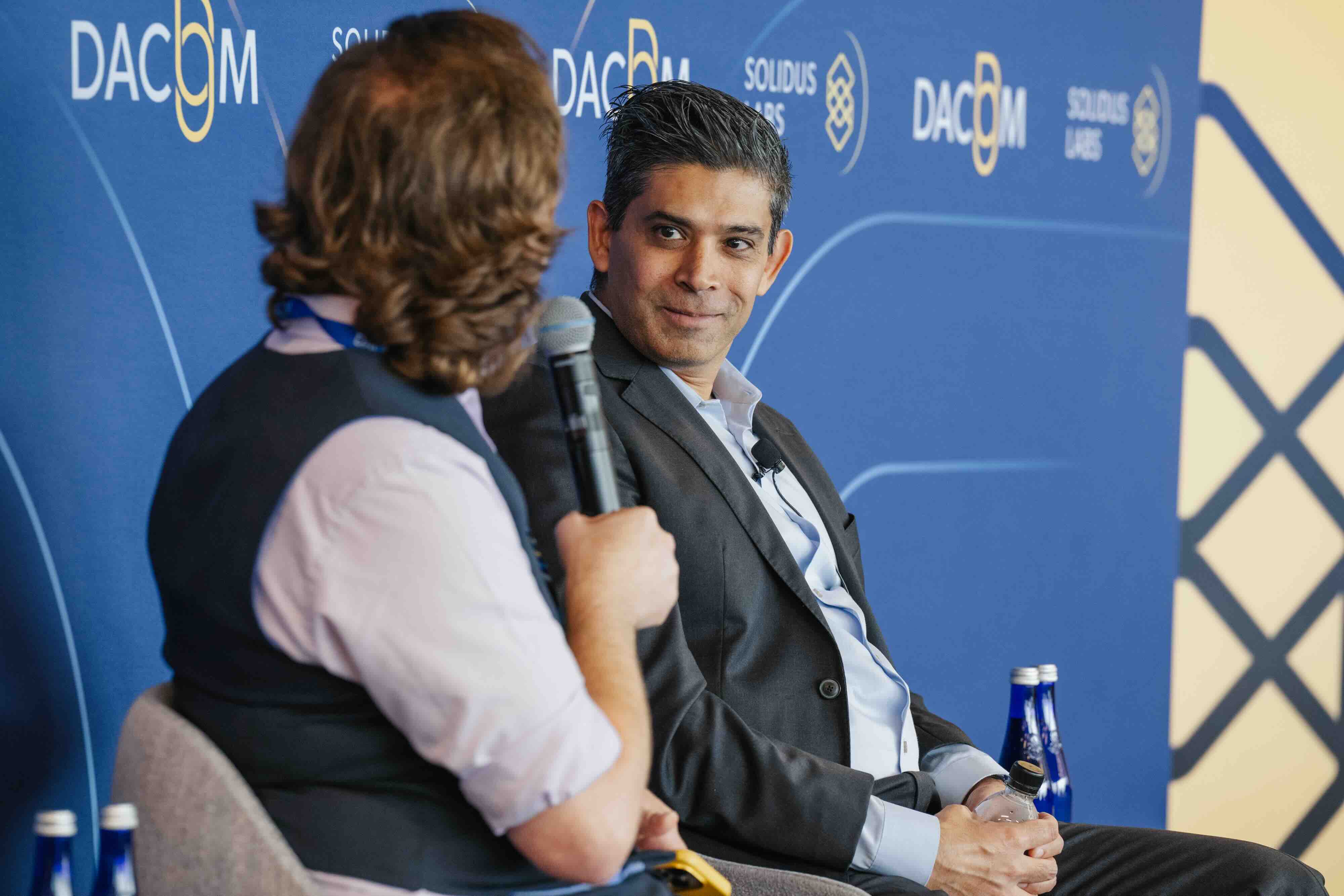
After a deep dive into the building blocks of tomorrow’s market, the conversation shifted to practical lessons from one of the most successful real-world programs in onchain finance to date. The rise of stablecoins puts the spotlight on how compliance and infrastructure converge to make digital assets safe for core financial operations. And few organizations embody that transition like Circle, the firm behind USDC and one of Solidus Labs’ most important partners. Taking the stage was Mandeep Walia, Chief Compliance and Risk Officer.
Circle’s approach, Walia explained, relies on two pillars: rigorous onboarding, KYC/KYB, sanctions screening, diligence, and ecosystem-wide monitoring across exchanges, custodians, analytics providers and law enforcement partners. “It’s not enough for us to screen our own flows,” he said. “Integrity is a collective effort.”
With USDC moving across exchanges, embedded wallets, cross-chain rails and other permissionless venues, now over 300 million transactions a month, Walia warned against chasing alerts one by one. “We’ve got to look for patterns, the big emerging storms, rather than chasing the raindrops.” The compliance job, in other words, is shifting from point checks to pattern detection at the ecosystem level.
More about: HALO for Stablecoin and Tokenized Asset Issuers
Regulation and Compliance in the Age of Digital Assets and AI
Watch the full fireside chat ►
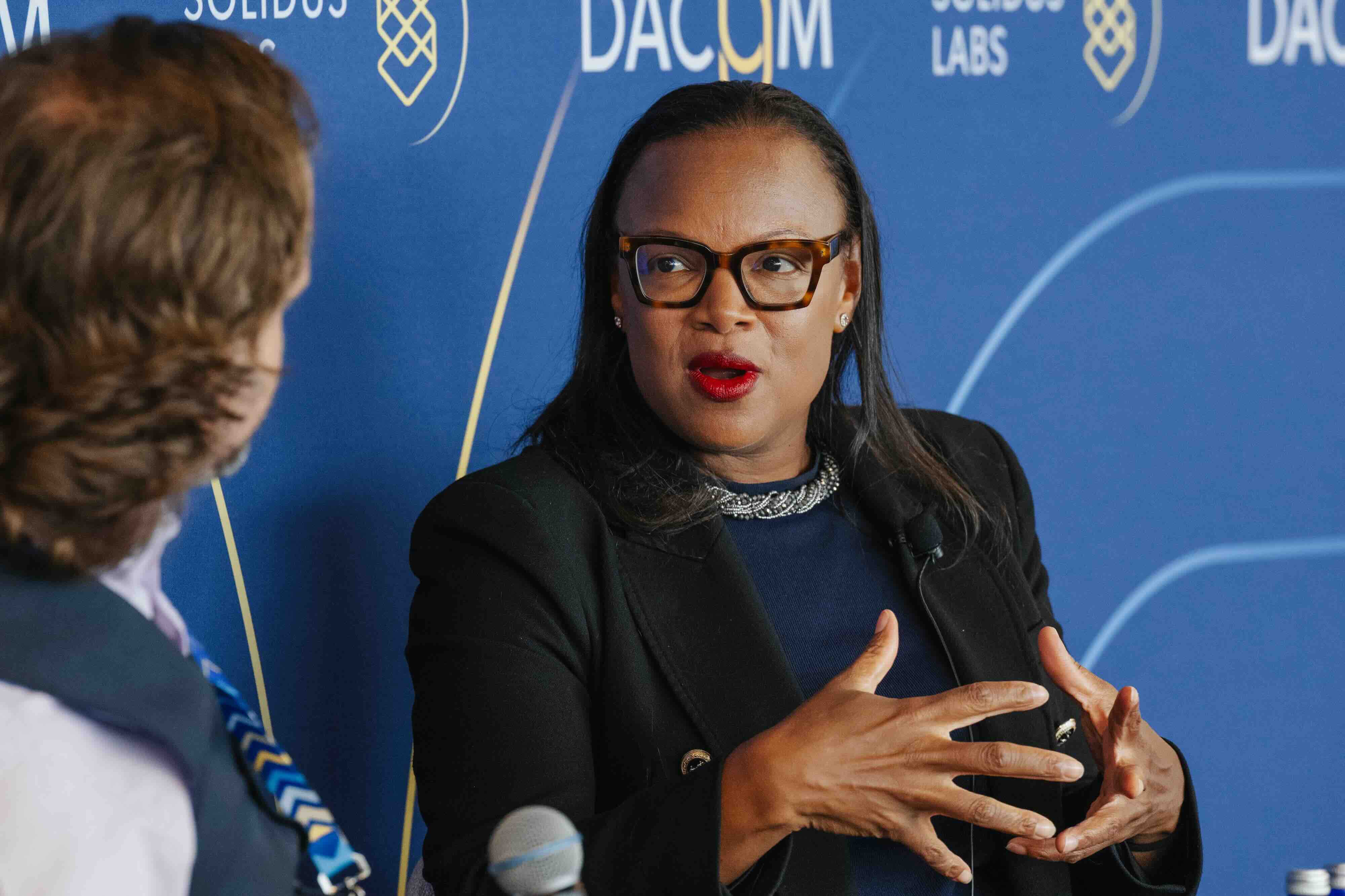
The conversation then turned to artificial intelligence, the defining technology of this decade. Former CFTC Commissioner Kristin Johnson, among the first U.S. regulators to grapple openly with AI’s market implications, kept the focus practical. AI is no longer theoretical, she argued: risk surveillance is already shifting from static, predictive analytics to agentic systems where “agents talk to agents.” The promise is immense, catching patterns humans can’t see, but so is the peril, with “AI-driven fraud” enabling bad actors to target vulnerable investors at scale.
The sticking point is explainability. Keep humans in the loop, build governance, and don’t discard effective models solely because they’re hard to narrate, especially in cyber defense and continuous monitoring.
At Solidus, we have pioneered a workable agentic-based blueprint for compliance teams: Deterministic detection engine, paired with AI agents to prioritize alerts, surface actionable insights and draft investigation notes. Human analysts stay in control, reviewing, approving, or rejecting, with a continuous feedback loop captured for audit. Each AI recommendation comes with a concise rationale and links to the underlying data, providing a level of built-in explainability that accelerates investigations by up to 20x while ensuring full human-in-the-loop oversight.
More about: Agentic-Based Compliance
Tokenization at the Core of Wall Street’s Future
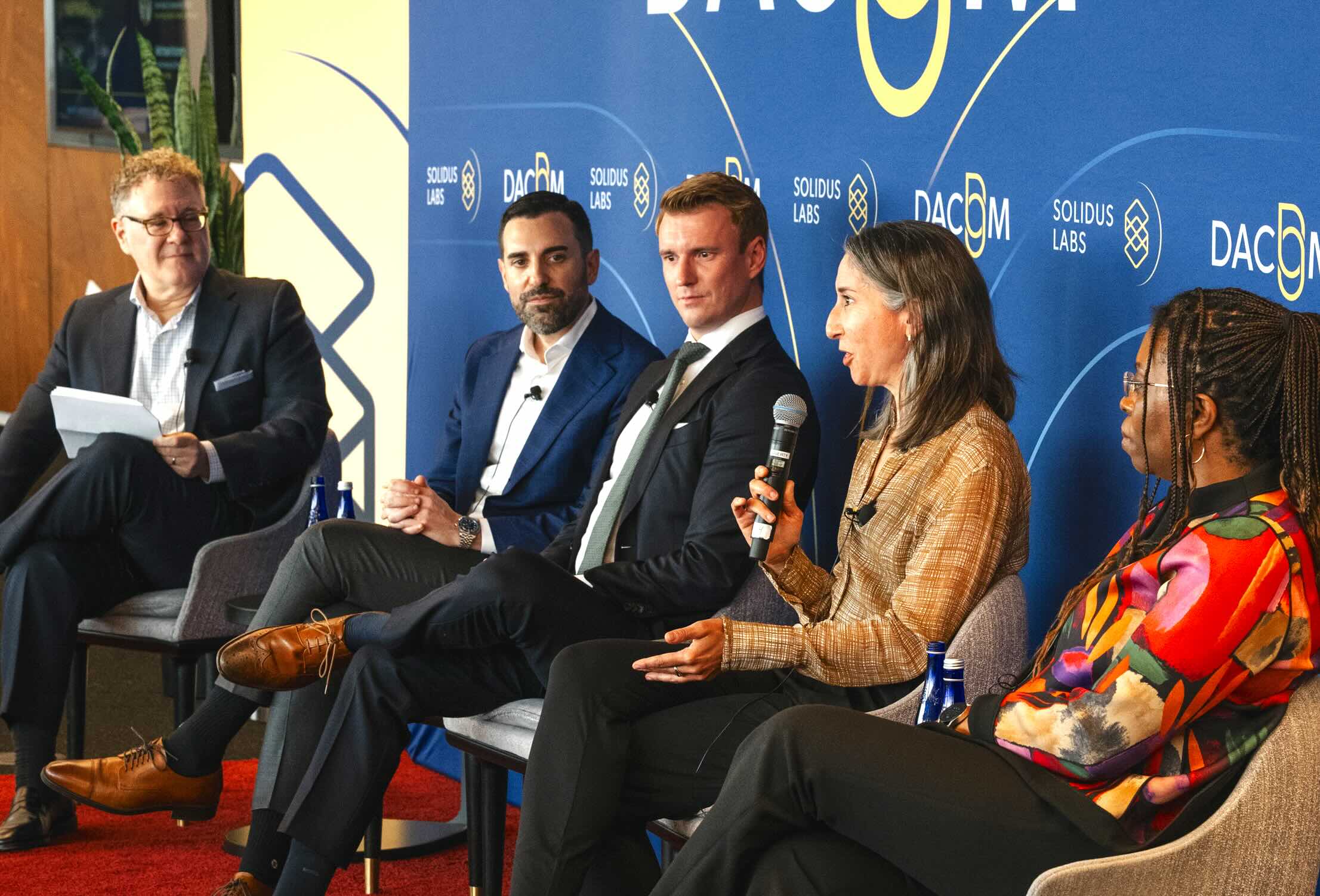
If AI is how we scale market oversight, then tokenization is how we scale market infrastructure.
A panel on tokenization, framed less about the hype, and more as a necessary migration from fragmented legacy rails to onchain settlement. The panel, moderated by Solidus Labs’ Chief Financial Officer Michael Kraines, featured Ben Gray of Kraken, Ron Hammond of Wintermute, Kate Eyerman of Blockchain.com, and Deb Brookes of the Wyoming Stable Token Commission, reflecting the diversity of players shaping this ecosystem.
The consensus: tokenization isn’t a distant promise but an inevitable migration from legacy rails to onchain settlement. Gray emphasized its potential to solve liquidity bottlenecks and streamline global settlement, while Hammond described the policy battle lines in Washington, where incumbents push to delay adoption, but momentum is shifting. Brookes highlighted Wyoming’s “Frontier Token,” a state-issued stablecoin whose revenues fund public schools, underscoring how public-sector adoption could reframe stablecoins as a public good.
For compliance leaders, the challenge is scaling a risk-based framework across assets and venues rather than building bespoke programs. Eyerman emphasized the need to plug consistent controls into diverse customer profiles and jurisdictions.
Tokenization can democratize access and streamline infrastructure, but only if compliance guardrails scale with it. Surveillance must evolve to monitor tokenized instruments across multiple venues and asset classes, integrating onchain and offchain flows.
More about: HALO for Stablecoin and Tokenized Asset Issuers
Frontlines of Integrity:
Lessons from Today’s Most Complex Markets
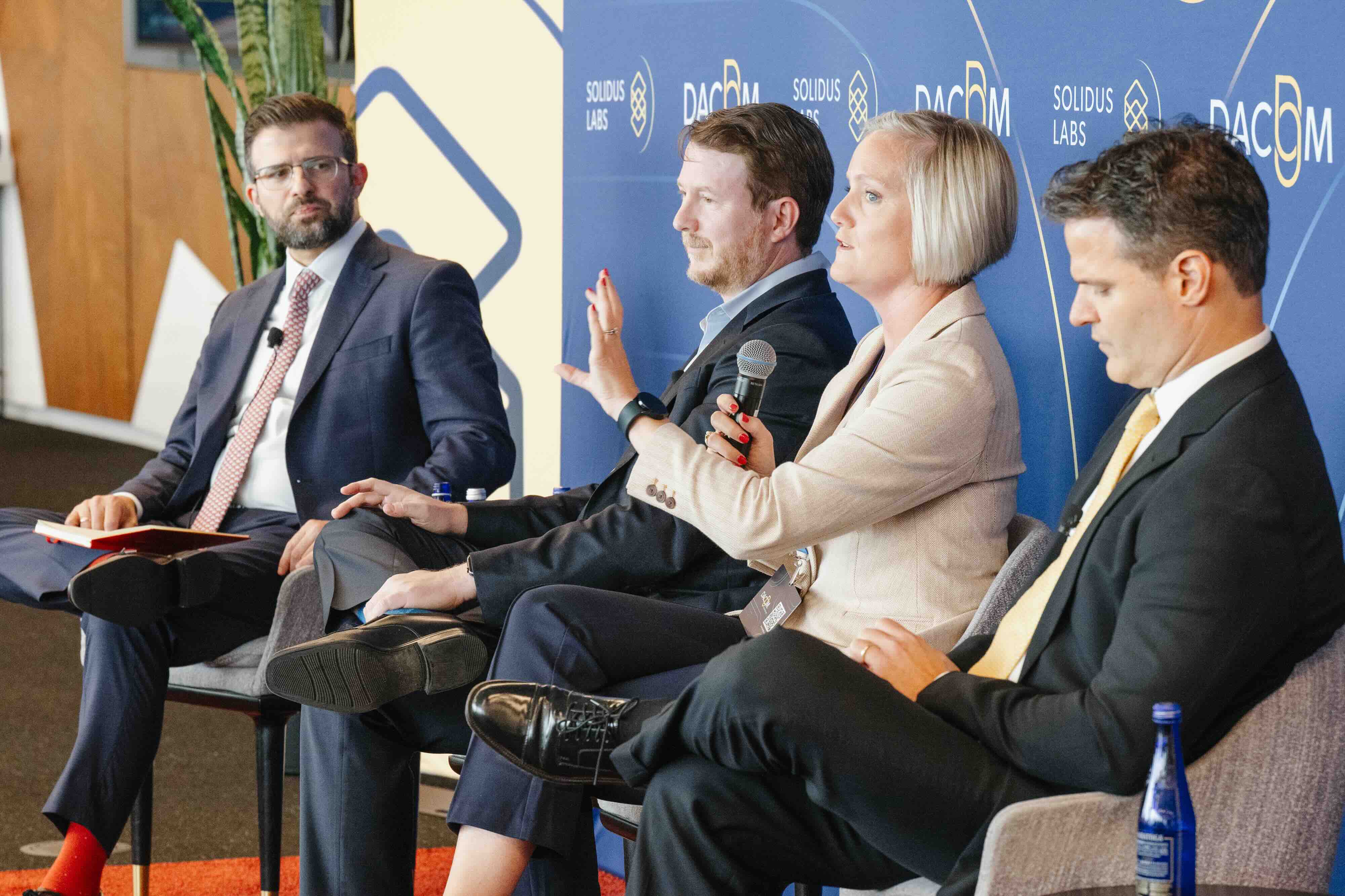
Tokenization hints at tomorrow’s markets, but markets function only when they’re fair. Each innovation–onchain liquidity, 24/7 trading, DeFi integration, new token listings–opens new risk vectors that outstrip yesterday’s playbooks. Moderated by Spiro Antonopoulos, Vice President, Client Solutions of Solidus Labs, the closing panel, Pete Elkins of Coinbase, Nicole Murphy of eToro US and Dean Sovolos of B2C2, offered a ground-level tour of how novel strategies create unfamiliar risk surfaces. Much of the discussion echoed challenges Solidus Labs works on with partners, translating novel risks into practical controls.
Elkins argued crypto’s core “features”, instant transferability and venue interoperability, create a self-policing arbitrage that keeps prices aligned across exchanges. However, the real blind spot is cross-market surveillance. Compliance teams cannot assume siloed oversight is sufficient. At Coinbase, compliance strengthens when AML, security, and surveillance act as one program.
More about: HALO for Global Exchanges
Murphy, whose firm popularized copy trading and social feeds, said retail participation is here to stay. eToro mitigates copy-trading conflicts by giving leaders and followers the same execution price, and it partners with Solidus Labs to monitor copy-trading activity and the platform’s social feed. Her playbook is hands-on: make the annual risk assessment a living resourcing plan and treat compliance as a “contact sport”, engage internal teams, peers, and regulators before there’s an incident
More about: HALO for Retail Brokerage
From the liquidity desk, Sovolos described the collision of institutional execution with retail-driven sentiment across thousands of venues, on- and offchain, operating 24/7. That speed and portability transmit risk instantly, and firms need cross-venue playbooks and shared standards for venue monitoring and responsible-trading obligations. Compliance frameworks must prepare for systemic contagion risk in a way legacy models never did, monitoring both institutional flows and retail-driven volatility simultaneously.
For DeFi, Sovolos stressed that counterparty risk is two-dimensional: the traditional checks (balance sheet, licenses, jurisdictional protections) and the protocol checks (audits, known bugs, incentive design, exploit vectors). This is where HALO’s frontier DeFi models come in handy, flagging emerging onchain risks—rug pulls exits, flash-loan spikes, wash volume pools and protocol exploits–in real time to safeguard liquidity against tainted flows and high-risk counterparties.
More about: HALO for Market Makers
If we want innovation to scale, integrity has to scale first. That means codifying what worked on the frontlines into standards that can be adopted across the entire ecosystem. Solidus Labs' on-demand Trade Surveillance Academy blends foundational fluency, advanced surveillance methodology, regulatory insight and forward-looking practice to help elevate your compliance expertise, tackle market manipulation with confidence, and lead the way in safeguarding market integrity.
More about: Trade Surveillance Academy
If DACOM made one thing clear, it’s that innovation will not scale without integrity. Regulators are moving toward pattern-based oversight, tokenization is rewriting market infrastructure, and DeFi adoption is accelerating. The lesson for compliance leaders: guardrails must evolve as fast as the markets. HALO offers a practical blueprint for the modern market: unified, explainable, and built for the realities of 24/7 onchain finance.



